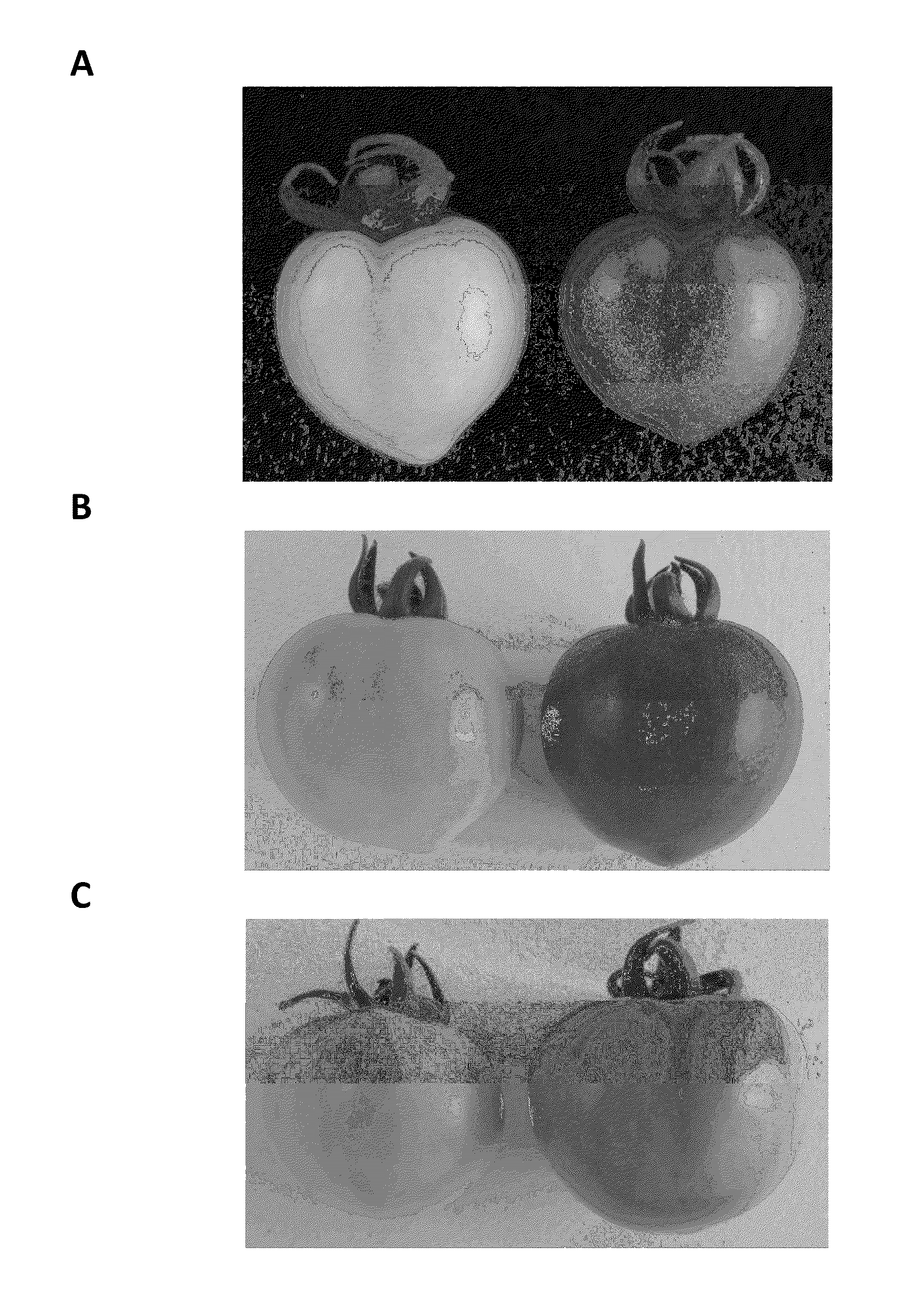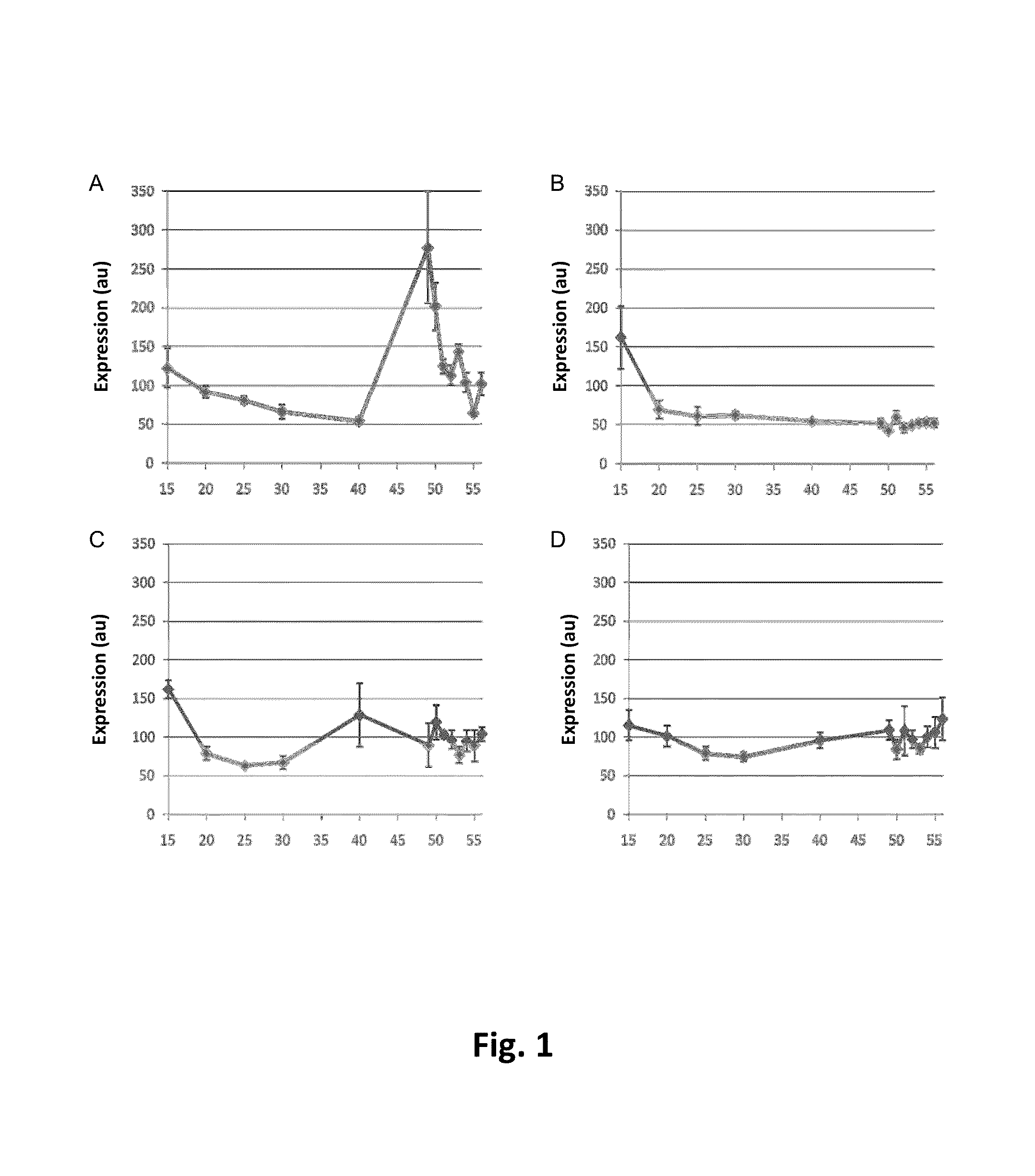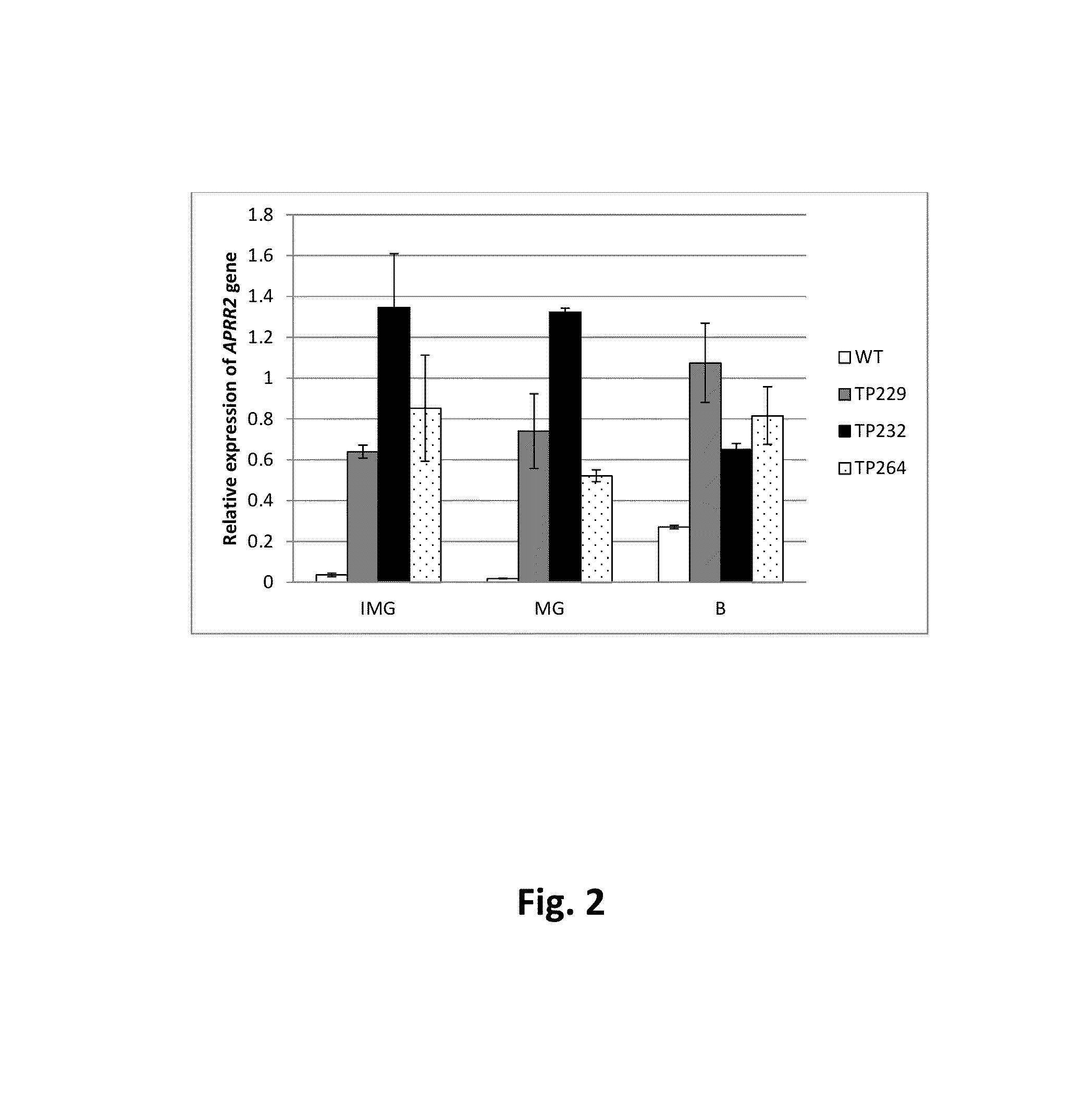Modulation of solanaceae fruit ripening
a technology of solanaceae and fruit, applied in the field of solanaceae fruit ripening modulation, can solve the problems of increasing the susceptibility of the fruit to handling damage, limiting the marketing period, increasing the cost of packaging and handling fruits, etc., and achieves enhanced fruit ripening properties, slow ripening properties, and high homology.
- Summary
- Abstract
- Description
- Claims
- Application Information
AI Technical Summary
Benefits of technology
Problems solved by technology
Method used
Image
Examples
embodiments
[0136]Embodiment number is listed on the left hand side of each line in this section.[0137]1. A vector comprising an isolated nucleotide sequence selected from the group consisting of:[0138]a) A nucleotide sequence set forth in SEQ ID NO:1 or SEQ ID NO: 2 or part thereof;[0139]b) A nucleotide sequence that is at least 80% identical to the nucleotide sequence of a);[0140]c) A nucleotide sequence comprising at least 21 consecutive nucleotides of the nucleotide sequence of a);[0141]d) A nucleotide sequence that hybridises under stringent conditions to the complement of any of nucleotide sequences a) to c); and[0142]e) A nucleotide sequence that is the complement to the nucleotide sequences of any one of a) to d).[0143]2. A vector comprising an isolated nucleotide sequence as set forth in SEQ ID NO:1 or SEQ ID NO: 2 or part thereof.[0144]3. A vector comprising an isolated nucleotide sequence that is at least 80% identical to SEQ ID NO:1 or SEQ ID NO: 2.[0145]4. A vector comprising an is...
example 1
Tomato Gene Identification and Network Inference
[0215]The Le005930_at gene (herein also referred to as tomato APRR2, or tomato APRR2 like) was identified as the result of a neural network analysis on a tomato array dataset. RNA samples were prepared from Ailsa Craig Wild type and nor, rin and Cnr mutant alleles in an Ailsa Craig background at different tomato fruit development stages. Ripening was performed according to standard methods. Expression values of Le005930_at were obtained using Syngenta's custom 23 k Affymetrix tomato genechip. The microarray data was normalised in the R statistical environment by the RMA method (Irizarry et al 2003) available in the affy Bioconductor package (Gautier et al 2004) being run via the affylmGUI package (Smyth 2005).
[0216]Transcription factors were selected for downstream analysis. Le005930_at was found to have a ripening specific expression profile dramatically increasing between 40 dpa and 49 dpa (FIG. 1a) which corresponds to the first app...
example 2
Tomato APRR2 Like Gene Sequence Information
[0219]The probe sequence from Le005930 was identical to SGN Unigene SGN-U585565. The gene represented by Le005930 was identified as most closely related to a two-component response regulator-like APRR2 from Arabidopsis thaliana.
PUM
| Property | Measurement | Unit |
|---|---|---|
| Fraction | aaaaa | aaaaa |
| Temperature | aaaaa | aaaaa |
| Temperature | aaaaa | aaaaa |
Abstract
Description
Claims
Application Information
 Login to View More
Login to View More - R&D
- Intellectual Property
- Life Sciences
- Materials
- Tech Scout
- Unparalleled Data Quality
- Higher Quality Content
- 60% Fewer Hallucinations
Browse by: Latest US Patents, China's latest patents, Technical Efficacy Thesaurus, Application Domain, Technology Topic, Popular Technical Reports.
© 2025 PatSnap. All rights reserved.Legal|Privacy policy|Modern Slavery Act Transparency Statement|Sitemap|About US| Contact US: help@patsnap.com



